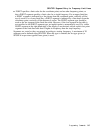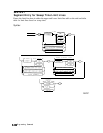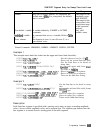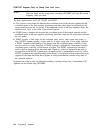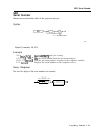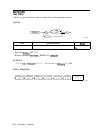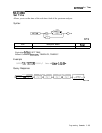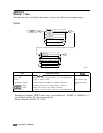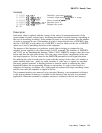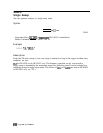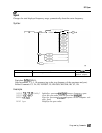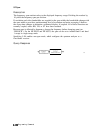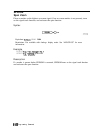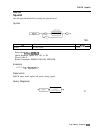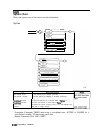
SMOOTH Smooth Trace
Example
10
OUTPUT
718;"IP;"
20
OUTPUT
718;"SNGLS;TS;"
30 OUTPUT
718;"VIEW
TRA;"
40 OUTPUT
718;"SMOOTH
TRA,lO;"
50 OUTPUT
718;"VIEW
TRA;"
60
END
Description
Initializes spectrum
analyzer:
Activates single-sweep
mode,
takes a sweep.
Stores results of trace A.
Smoothes trace A.
Displays the result.
Each point value is replaced with the average of the values (in measurement units) of the
given number of points centered on it. Increasing the number of points increases smoothing at
the cost of decreasing resolution. If the number of points is an even number, then the number
of points is increased by one. If the number of points is larger than the size of SOURCE, then
the size of SOURCE is used (unless size of SOURCE is even, in which case the size of SOURCE
minus one is used). Smoothing decreases at the endpoints.
The purpose of this function is to perform a spatial video averaging as compared to the
temporal version supplied by the video-average (VAVG) command. The functions of SMOOTH
and VAVG are not interchangeable however. Unlike VAVG, SMOOTH averages values that occur
before and after the data point in time. This can cause some display irregularities at the start
and stop frequencies. Use low values for the SMOOTH parameter to avoid signal distortion.
By replacing the value of each point in a trace with the average of the values of a number of
points centered about
that
point, any rapid variations in video noise or signals are smoothed
into more gradual variations. It thereby performs a function similar to reducing the video
bandwidth without the corresponding changes in sweep time. As such, it does result in a
reduction of frequency resolution. Also, signal peaks are reduced with large smoothing values,
and this can cause the amplitude to appear to be low.
This command requires user memory for its execution. Memory is not permanently allocated,
so the largest amount of memory is available for the functions that are used in a particular
application. When the command is complete, memory is returned to the free user memory.
Programming Commands 5495



